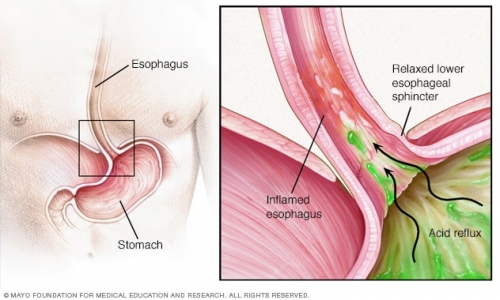profile/3690IMG-20200925-WA0011.jpg
Amygold

INFERTILITY IN MAN
~8.0 mins read
Up to 15 percent of couples are infertile. This means they aren't able to conceive a child, even though they've had frequent, unprotected sexual intercourse for a year or longer. In over a third of these couples, male infertility plays a role.
Male infertility is due to low sperm production, abnormal sperm function or blockages that prevent the delivery of sperm. Illnesses, injuries, chronic health problems, lifestyle choices and other factors can play a role in causing male infertility.Not being able to conceive a child can be stressful and frustrating, but a number of male infertility treatments are available.
Symptoms
The main sign of male infertility is the inability to conceive a child. There may be no other obvious signs or symptoms. In some cases, however, an underlying problem such as an inherited disorder, a hormonal imbalance, dilated veins around the testicle or a condition that blocks the passage of sperm causes signs and symptoms.
Although most men with male infertility do not notice symptoms other than the inability to conceive a child, signs and symptoms associated with male infertility include:
When to see a doctor
See a doctor if you have been unable to conceive a child after a year of regular, unprotected intercourse or sooner if you have any of the following:
Causes
Male fertility is a complex process. To get your partner pregnant, the following must occur:
Medical causes
Problems with male fertility can be caused by a number of health issues and medical treatments. Some of these include:
Varicocele. A varicocele is a swelling of the veins that drain the testicle. It's the most common reversible cause of male infertility. Although the exact reason that varicoceles cause infertility is unknown, it may be related to abnormal testicular temperature regulation. Varicoceles result in reduced quality of the sperm.
Treating the varicocele can improve sperm numbers and function, and may potentially improve outcomes when using assisted reproductive techniques such as in vitro fertilization.
Ejaculation issues. Retrograde ejaculation occurs when semen enters the bladder during orgasm instead of emerging out the tip of the penis. Various health conditions can cause retrograde ejaculation, including diabetes, spinal injuries, medications, and surgery of the bladder, prostate or urethra.
Some men with spinal cord injuries or certain diseases can't ejaculate semen, even though they still produce sperm. Often in these cases sperm can still be retrieved for use in assisted reproductive techniques.
Defects of tubules that transport sperm. Many different tubes carry sperm. They can be blocked due to various causes, including inadvertent injury from surgery, prior infections, trauma or abnormal development, such as with cystic fibrosis or similar inherited conditions.
Blockage can occur at any level, including within the testicle, in the tubes that drain the testicle, in the epididymis, in the vas deferens, near the ejaculatory ducts or in the urethra.
Environmental causes
Overexposure to certain environmental elements such as heat, toxins and chemicals can reduce sperm production or sperm function. Specific causes include:
Overheating the testicles. Elevated temperatures impair sperm production and function. Although studies are limited and are inconclusive, frequent use of saunas or hot tubs may temporarily impair your sperm count.
Sitting for long periods, wearing tight clothing or working on a laptop computer for long stretches of time also may increase the temperature in your scrotum and may slightly reduce sperm production.
Health, lifestyle and other causes
Some other causes of male infertility include:
Certain occupations including welding or those involving prolonged sitting, such as truck driving, may be associated with a risk of infertility. However, the research to support these links is mixed.
Risk factors
Risk factors linked to male infertility include:
Complications
Infertility can be stressful for both you and your partner. Complications of male infertility can include:
Prevention
Many types of male infertility aren't preventable. However, you can avoid some known causes of male infertility. For example:
profile/3690IMG-20200925-WA0011.jpg
Amygold

Causes Of Heart Burn
~1.8 mins read
Heartburn is a burning pain in your chest, just behind your breastbone. The pain is often worse after eating, in the evening, or when lying down or bending over.
Occasional heartburn is common and no cause for alarm. Most people can manage the discomfort of heartburn on their own with lifestyle changes and over-the-counter medications.Heartburn that is more frequent or interferes with your daily routine may be a symptom of a more serious condition that requires medical care.
Symptoms
Symptoms of heartburn include:
When to see a doctor
Seek immediate help if you experience severe chest pain or pressure, especially when combined with other signs and symptoms such as pain in the arm or jaw or difficulty breathing. Chest pain may be a symptom of a heart attack.
Make an appointment with your doctor if:
Causes
How heartburn and GERD occurOpen pop-up dialog box
Heartburn occurs when stomach acid backs up into the tube that carries food from your mouth to your stomach (esophagus).
Normally when you swallow, a band of muscle around the bottom of your esophagus (lower esophageal sphincter) relaxes to allow food and liquid to flow down into your stomach. Then the muscle tightens again.
If the lower esophageal sphincter relaxes abnormally or weakens, stomach acid can flow back up into your esophagus (acid reflux) and cause heartburn. The acid backup may be worse when you're bent over or lying down.
Risk factors
Certain foods and drinks can trigger heartburn in some people, including:
Being overweight or pregnant also can increase your chances of heartburn.
Advertisement

Link socials
Matches
Loading...

 How heartburn and GERD occurOpen pop-up dialog box
How heartburn and GERD occurOpen pop-up dialog box